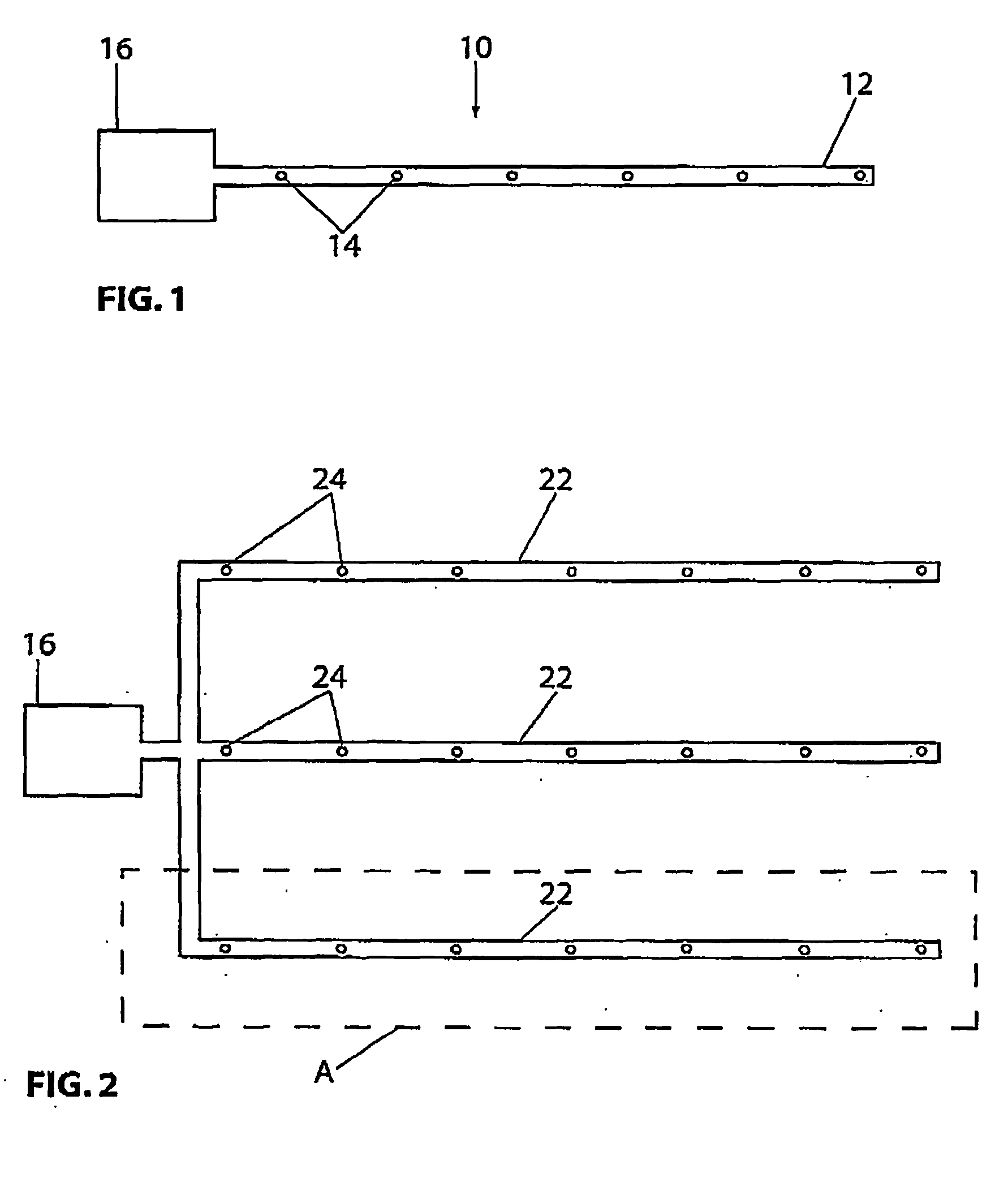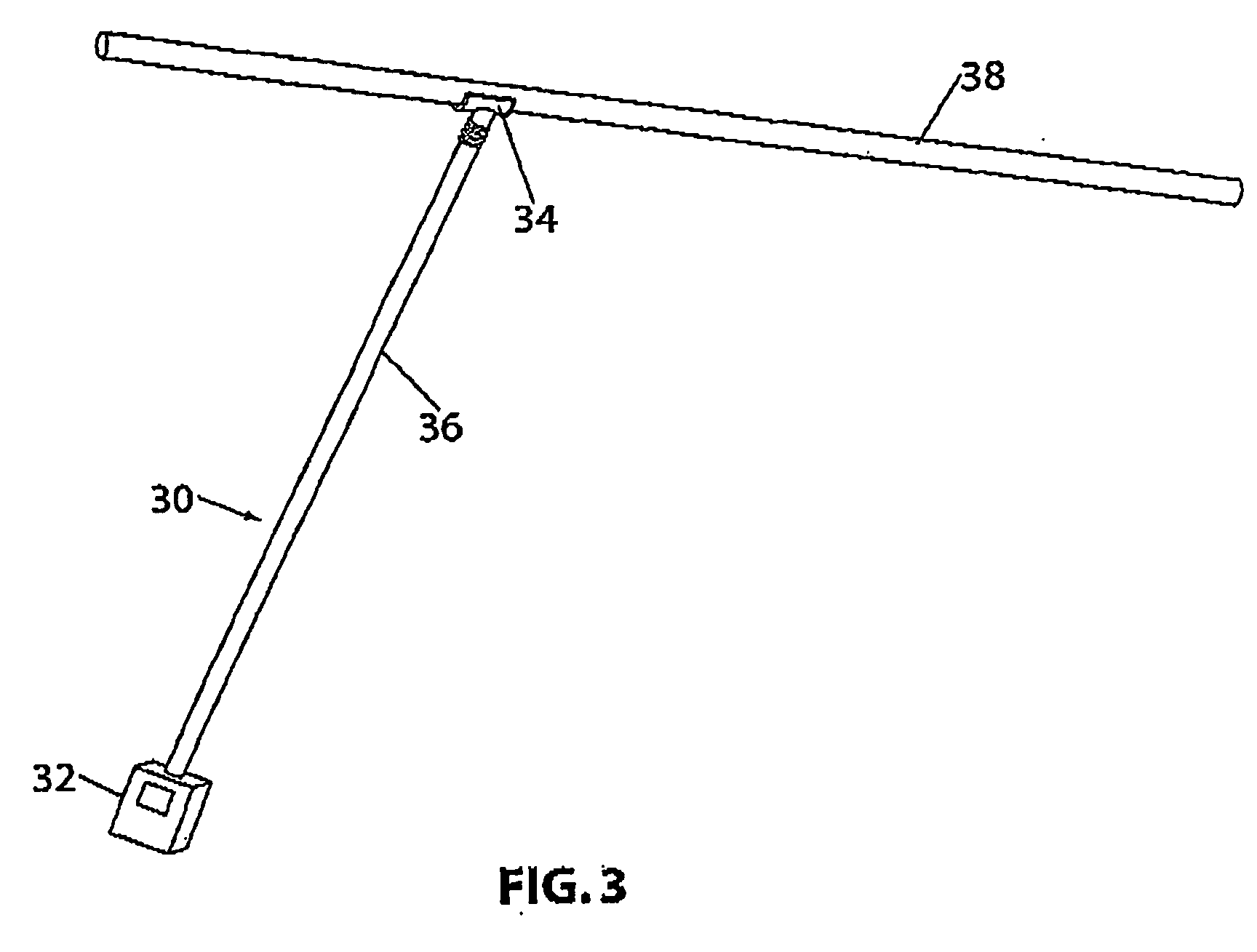Method and apparatus for determining operational condition of pollution monitoring equipment
- Summary
- Abstract
- Description
- Claims
- Application Information
AI Technical Summary
Benefits of technology
Problems solved by technology
Method used
Image
Examples
second embodiment
[0085] a particle detection system is shown in FIG. 2, where a pipe network 20 comprising a number of pipes 22 with sampling points 24 is shown. A similar detector to the detector 16 shown in FIG. 1 may be used. One pipe 22 may consist of a branch, such as branch A in FIG. 2.
[0086] In the above systems, air is drawn through sample points 14, 24 and into the pipe 12, 22. The pipe 12 (or 24), will have a number of sampling points 14, (or 24), and therefore air will be drawn through all sampling points within a single pipe when the sampling points are open. Typically during installation all holes are open. If all sampling points are of equal resistance to flow, there are no flow losses along the pipe, and the ambient pressure outside each sample point 14 is the same, then the airflow through all sampling points along pipe 12 will be equal. This results in equal dilution of air from each region to be sampled. Thus, for example, if there are 10 sample inlets, holes 24, and an alarm is to...
first embodiment
[0095] In FIG. 3 an air sampling particle detector system testing apparatus 30 is shown. Test apparatus 30 comprises a sensing device 32, which itself comprises a flow sensor, a connector 34 and an extension means 36. The connector 34 is adapted to fit over a sampling pipe 38 at a sample point (best shown in FIGS. 4, 5a, 5b and 6). The connector 34 may take a number of forms depending on the type of sampling point used in the aspirated system. Some forms of sampling point are shown in FIGS. 4, 5a, 5b and 6, but the apparatus may be used with a variety of sampling point configurations. The main feature of a connector 34 is that it is adapted to fit a sampling point in a way that provides a reasonable seal. Perfect sealing, while desirable is not required, given the relatively low pressure differentials anticipated in measuring air flow through the sampling points. Sampling points typically have holes from about 2 mm and larger in diameter. Hole 37 represents one form of sample point,...
PUM
 Login to View More
Login to View More Abstract
Description
Claims
Application Information
 Login to View More
Login to View More - Generate Ideas
- Intellectual Property
- Life Sciences
- Materials
- Tech Scout
- Unparalleled Data Quality
- Higher Quality Content
- 60% Fewer Hallucinations
Browse by: Latest US Patents, China's latest patents, Technical Efficacy Thesaurus, Application Domain, Technology Topic, Popular Technical Reports.
© 2025 PatSnap. All rights reserved.Legal|Privacy policy|Modern Slavery Act Transparency Statement|Sitemap|About US| Contact US: help@patsnap.com



